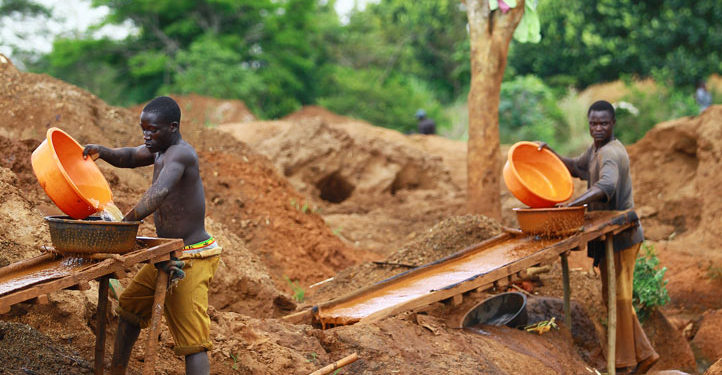By THE OBSERVER UG
Uganda is finally putting in place measures to tap into the global demand for critical minerals, which are needed for the smooth transition from fossil fuels to clean energy technologies.
For more than three decades, private sector investments in Uganda’s mining sector have been low. The reasons have varied from the unavailability of strong data about the potential of the country’s geological system; the absence of a mining major company to attract more investments in the country; to poor infrastructure to support the mining sector.
There has been positive change. The biggest part of Uganda’s geological system has been mapped. While Uganda is yet to attract a major mining company, recent discoveries have raised the profile of the country. And the infrastructure – both the transport network and electricity generation – have improved significantly around the mining areas.
The global wave of demand for critical minerals such as cobalt, lithium, etc, which are needed in the manufacturing of electric batteries, is something that has the potential of transforming Uganda’s mining outlook.
As such, Uganda’s mining prospects are looking positive based on the global demand for critical minerals. Although there are some risks that investors will have to contend with.
STATE MINING COMPANY
Uganda will test some sections of its new mining law in 2024, especially with the creation of the national mining company. The set-up of this company, especially whoever heads it, is expected to be one of the big talking points in the sector.
The national mining company – modelled around the Uganda National Oil Company – will hold the country’s financial interests in the mining sector. The law allows the state mining company to take up to 15 per cent shareholding in a mining project. This provision has jolted prospective investors, and many will look at it as a risk to any mining venture they intend to enter.
However, Uganda’s state mining company is not expected to enter into any joint venture this year as most of the mining projects are at the risky exploration stage. Such a joint venture could come into play in the medium to long term as some exploration in the country matures to the development stage.
In the short term, however, the one critical question that government will grapple with is how to finance the state mining company. Already, the government is dealing with high debt levels amidst insufficient tax revenues.
VALUE ADDITION
The global energy transition, which calls for the exploration of critical minerals, has reinforced government’s resolve to promote value addition within its mining sector. A ban on the exportation of raw minerals has slowed down investments in some parts of the mining sector, with investors arguing that the high costs of production – such as expensive electricity and the absence of a local lucrative market for finished products – make it hard for them to invest heavily in refining minerals.
Government is not expected to relax its policy on the ban on the export of raw ores. Recently, the minister of Energy and Mineral Development, Ruth Nankabirwa, signed a new statutory instrument that sets higher purity levels for tin exports. The move is meant to force companies involved in the exploration of tin to refine the mineral.
This policy directive could make it difficult for some companies to complete transactions within the tin industry as it introduces a new condition of value addition. For example, Gecko Uganda Limited, one of the main explorers of tin in Uganda, acquired new four-year exploration tin licenses in September 2023.
The company is, however, looking for new investors after a recent bid from Australia’s Javelin Minerals Limited collapsed due to unsatisfactory due diligence results. During the negotiations, Javelin insisted that it would only go ahead with the transaction if there was “a no regulatory action condition” and “a no material adverse change condition.”
Uganda’s recent policy instrument, which raised the purity levels of tin from the previous level of between 67 per cent and 70 per cent, to 99.85 per cent, is an adverse regulatory action condition. There is a likelihood a similar government position on the purity of minerals is being discussed in regards to iron ore and gold.
Unlike tin, whose exploration volumes are low, the companies involved in the gold industry are likely to push back. Gold is listed as one of Uganda’s top exports, with nearly 70 per cent of the exports said to be unprocessed.
REDUCING STEEL IMPORTS
In regards to iron ore, which is used to make steel bars, the government will look to reduce the importation of steel. Uganda imports steel and iron products worth $370 million, mainly from Asia, according to the Ministry of Finance. Government is expected to come up with a policy measure to drag down that figure by about 75 per cent.
Uganda’s new Energy Transition Plan raises concerns over the level of carbon emissions from the steel industry due to the use of coal during production. There is low expectation, if any, that a short-term substitution from the use of coal in the steel industry is available, although Uganda’s government is expected to place some urgency on finalising negotiations over the need for a gas pipeline from Tanzania to support heavy industries such as steel.
The two countries have already agreed on doing feasibility studies about the commercial viability of the project.
BENEFICIATION
One way the government intends to promote value addition is by creating beneficiation facilities in the different regions of the country. This will also help the government to track the minerals going in and out of the country. This, if achieved, will boost the country’s profile as being transparent.
KILEMBE COPPER MINES
Four companies submitted bids to the Ministry of Energy and Mineral Development in December for the revival of Kilembe Copper mines. The four companies are: Gingko Energy, Liaoning Hongda (trading as Wagagai Mining), Sinomine Power China, and Sarrai Group. Government will evaluate the bids from these companies in January. Government is expected to announce its preferred bidder at some point in the year as the country looks to revive copper production at its once flagship mine, located in the western district of Kasese.
MAKUUTU RARE EARTHS
The Makuutu rare earths project promises to be another flagship mine after government awarded a conditional 21-year mining license to the project.
The award of the license will unlock the financing that is needed to move the project forward. Australia’s IonicRE has agreed to increase its shareholding in the Makuutu project from 60 per cent to 94 per cent. Rwenzori Rare Metals, the minority shareholder in the project, is in the process of selling its stake in the project after its exploration license expired at the end of December 2023.
The Makuutu rare earths project contains a basket of different minerals. IonicRE says it is constructing a demonstration plant that will guide some of its test works and mine plan.
URANIUM DEPOSITS
Government is showing renewed interest in uranium deposits, just over 10 years since it issued an order stopping any award of exploration licenses to prospective investors.
Currently, government is undertaking tests on different samples with the hope of attracting a prospective investor to partner in developing a project. Government will continue to exclusively explore for potential uranium targets throughout 2024 before it commits on its next plan.
The government remains committed to its plans of introducing nuclear energy into its energy mix by 2032. The government wants one of the two large nuclear reactors it intends to commission – each with a capacity of 1GW – to use local uranium resources.
OROM CROSS GRAPHITE
The Orom Cross graphite project in the northern Uganda district of Kitgum remains a promising development. And with graphite listed as a critical mineral, which is used in lubricants and batteries, the developments at the project will be followed keenly by prospective investors.
Blencowe Resources achieved a lot when it signed a $5 million grant from Development Finance Corporation (DFC), a US financial institution, for its Orom Cross project. The success of the tests and studies that Blencowe is undertaking will determine if the next lines of tranches from DFC will be released.
Should Blencowe succeed in getting more funding, there will be a major announcement coming out of Kitgum towards the end of 2024 about plans of progressing the project to the development stage.
There is probably no time that Uganda’s mining industry looked brighter over the last decade than it is today. Non-traditional minerals such as tin, graphite and rare earths are raising the profile of Uganda’s mining industry within cabinet meetings. On top of that, the exploration of limestone in places such as Karamoja has led to the emergence of new cement companies.
Although critical minerals are now being sought-after, Uganda’s mining sector is still held back by the limited budget support. Government spend on the mining sector is still below two per cent of the total government resource envelop. Government intends to allocate $8.3 million to the mineral subsector in the next financial year, which starts in July 2024, which represents a 35 per cent drop from the previous financial year.
The limited funding means that human capital is not enough to regulate and supervise the sector. Government is, therefore, losing a lot of revenue due to challenges in supervising the mining sector.
Also, collection of government data for certain mineral areas is not moving as fast as investors would wish. If there is a doubling of government funding to the mining sector, the outlook of Uganda will be transformed greatly.
This outlook for 2024 first appeared in the Deep Earth report







Discussion about this post